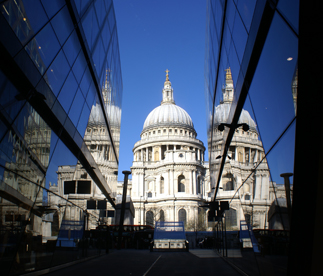An insurance company is urging churches to take steps to prevent arson after a church in Sheffield was seriously damaged. Claims data from the specialist insurer Ecclesiastical shows over 150 churches across the UK have suffered arson attacks over the past five years, causing millions of pounds in damage, typically to historic buildings.
Pitsmoor Christ Church was the victim of a fire on July 4, which South Yorkshire Police are investigating as arson. While the number of arsons dropped during the pandemic, Ecclesiastical is warning churches to act over the summer months when arson attacks more frequently occur. Almost every county in the country has seen churches targeted by arsonists. London, Lancashire, Yorkshire, Essex and Kent have been the worst affected.
Unlike theft of metal where organised gangs tend to carry out raids over a large geographical area, arson is often as a result of the actions of an individual and with no clear trends. This makes proactive action to protect church buildings even more important, says Ecclesiastical, which was formed over 135 years ago to protect Anglican churches and church buildings against the risk of fire. The Gloucester-based company’s risk management staff produce fire prevention advice, including arson prevention guidance, specifically for churches.
Among recent significant fires; in 2017 the Grade II listed Church of the Ascension in Lower Broughton, Greater Manchester was devastated by an arson attack leaving the community distraught. The restoration project, led by Ecclesiastical, is due for completion later this year. All Saints Church in Mackworth, Derbyshire was gutted by fire in December 2020. A teenager has since pleaded guilty to setting fire to the church and schools in the area and is awaiting sentencing. A lengthy restoration project is under way to restore the Grade I listed building.
Jo Whyman, risk management director at Ecclesiastical Insurance, said: “Our data shows that arson seems to be on the increase again and the impact of these attacks can be truly devastating.
“It’s horrible to see churches damaged as a result of a fire – particularly at the hands of criminals. These buildings are part of the fabric of our society, at the heart of our communities, and have been for centuries. Senseless acts by individuals not only destroy bricks and mortar, but often priceless artefacts that have historical significance to our nation.”
He added: “Churches are legally required to carry out a fire risk assessment and in doing so they’ll be able to understand the risk of fire – including the risk of an arson attack. It is really important that steps are taken to prevent fires and by following our guidance you can help to reduce the risk of arson at your property. The good news is, many of the recommended safeguards don’t require capital investment but simple precautionary steps which could make all the difference.
“Our Risk Management team are on hand to assist our customers and bespoke guidance and support is available through our Risk Advice Line as well as general guidance available on our website.”
For Ecclesiastical’s arson prevention advice visit the company’s website, www.ecclesiastical.com.
Photo: St Paul’s Cathedral, which famously survived the 1940-41 London Blitz with some near-misses.









